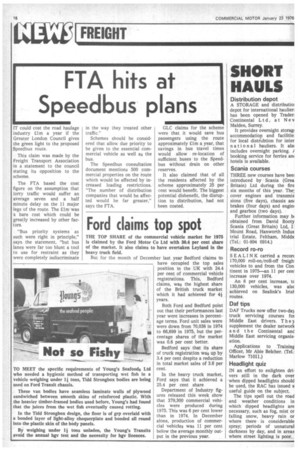FTA hits at Speedbus plans
Page 18

If you've noticed an error in this article please click here to report it so we can fix it.
IT could cost the road haulage industry Elm a year if the Greater London Council gives the green light to the proposed Speedbus route.
This claim was made by the Freight Transport Association in a statement to the council stating its opposition to the scheme.
The FTA based the cost figure on the assumption that lorry traffic would suffer an average seven and a half minute delay on the 11 major legs of the route. The Elm was a bare cost which could be greatly increased by other factors.
"Bus priority systems as such were right in principle," says the statement, "but bus lanes were far too blunt a tool to use for restraint as they were completely indiscriminate in the way they treated other traffic," Schemes should be considered that allow due priority to be given to the essential commercial vehicle as well as the bus.
The Speedbus consultation document mentions 500 commercial properties on the route which would be affected by increased loading restrictions. "The number of distribution companies that would be affected would be far greater," says the FTA. GLC claims for the scheme were that it would save bus passengers using the route approximately Elm a year, that savings in bus travel times would allow re-location of sufficient buses to the Speedbus without drain on other reserves.
It also claimed that of all the residents affected by the scheme approximately 25 per cent would benefit. The biggest potential disbenefit, the disruption to distribution, had not been costed.
















































































